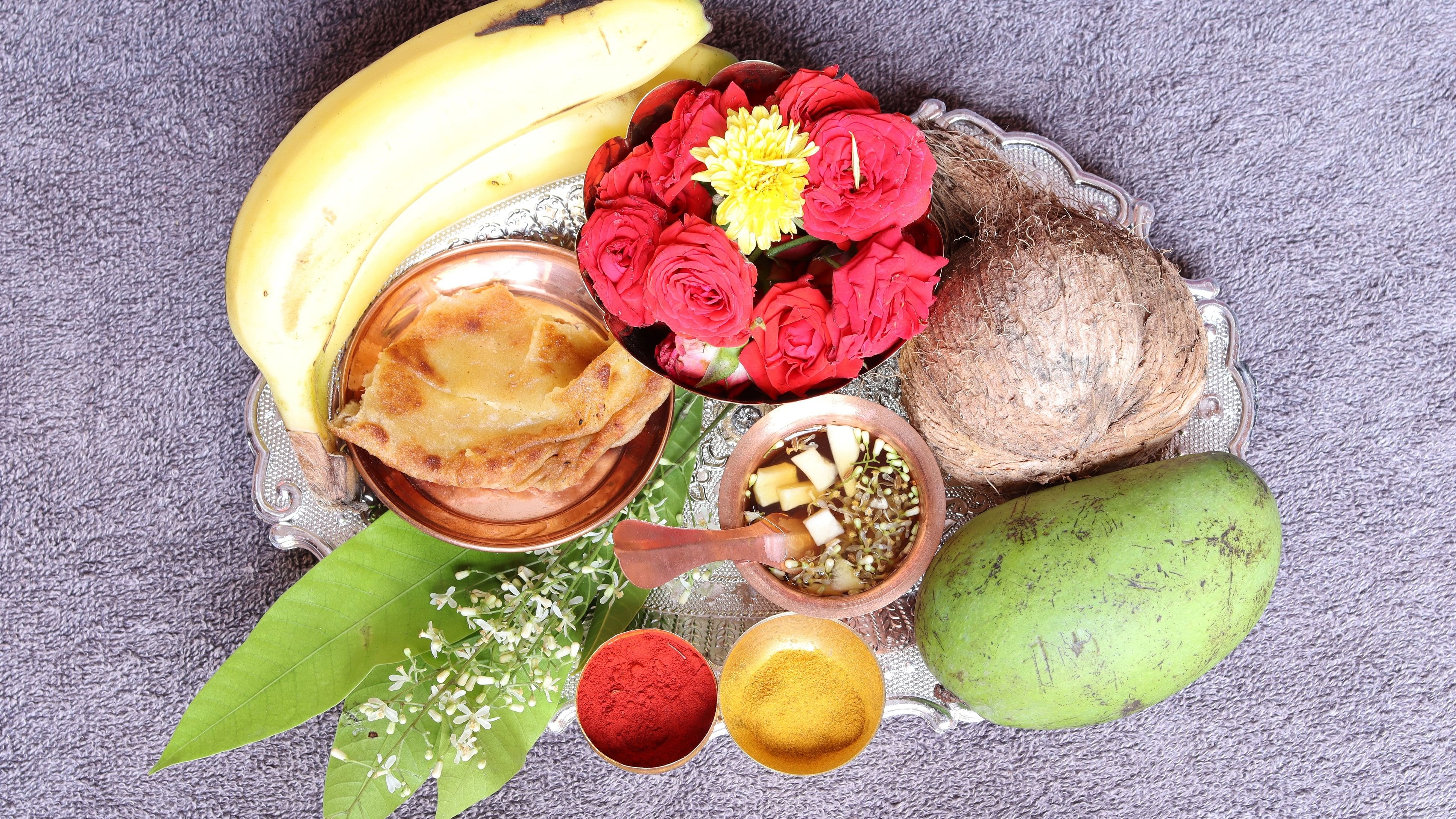
Representative image
Image courtesy iStock
A notable feature of Indian cooking is that most recipes are tied to a specific practice along the farm-to-table lifecycle of an ingredient, making it inherently sustainable. Whether it is using vegetable and fruit peels in innovative ways, or employing various parts of edible plants, from shoots, leaves, skins to seeds, in different recipes.
Pachadis and chutneys, which are quintessential elements of the great Indian thali, routinely use these bits and bobs, adding depth and variety to the experience. Add to this the seasonal calendar, where the varieties of readily available, naturally grown produce either limit or expand the everyday menu, and you have a way of life that, over time, begins to birth an almost in-built, autonomous sense of self-awareness and nature connectedness. Take, for example, a mango that is grown and force-ripened before the actual calendar-set summer days — it could be a recipe for disaster, leading to stomach issues. Or avarekai that is grown throughout the year — lacking the distinct, grassy, mulch-like winter aroma (locally known as sogadu), which won’t just taste different but also feel harder to digest. While everyday cooking brings these nuggets of learning, our festivals are a gateway to not just traditional recipes and celebrations but also to the intuitive wisdom our ancestors had developed for balanced, season-focused cooking. One key element of their choices involved honouring different aspects of the food system, which led to a specific pattern and timetable for the consumption of food. Right from the onset of spring, marked by Ugadi — the first day of the New Year according to the lunar calendar — the use of tender neem leaves and blossoms, raw mangoes, jaggery and coconut, has been a significant way to establish the tastes of the season that best suit the body.
With spring comes a certain dampness in the air, a slow and still-sluggish manner with winter’s grip in a slow release mode. This calls for dry, light, sharp foods that help add a briskness to one’s step, which translates to astringent, bitter, salty and sour flavours. Also, a change in seasons — specifically spring and fall — calls for a cleansing ritual, to help the body purge the excess mucus and heat accumulated in the body, respectively. Here are some recipes that herald the turn of a new season, bringing distinct flavours to the average meal. They’re season and climate-friendly, help keep the metabolism in check, and are innately submissive to the cyclical processes that make good food not just green, but also shared knowledge, evergreen. Besides, the very constitution of the term pachadi could well be a metaphor for the versatility and sustainability of Indian cuisine — because everyone wants a little something “on the side,” and they can always find it in the comfort of a pachadi.
Ugadi pachadi
(Serves 3-4)
Ingredients
l 1 small ball of tamarind, soaked in water
l 3-4 tablespoons jaggery powder
l 1 Totapuri mango, chopped
l 3-4 tablespoons fresh coconut, cut into small dices
l 1 teaspoon neem flowers
l 6-8 tender neem leaves, cleaned and torn into bits
l ¼ teaspoon each salt and black pepper powder
l ¼ cup water
Method
l Soak the ball of tamarind in water for about 30-40 minutes. Squeeze well and extract the pulp.
l Add the tamarind extract to a bowl, and mix in the jaggery powder.
l Add the mangoes, coconut, neem blossoms and neem leaves.
l Season with salt and pepper, add the water, set aside or chill for at least an hour.
Cucumber & ash gourd peel pachadi
(Serves 3-4)
Ingredients
l Skin of 1 cucumber, peeled into ribbons
l 2-3 tablespoons ash gourd/ white pumpkin peels, sliced thin and long
l 1 tablespoon grated coconut
l 200-300 ml curd
l Salt, sugar and pepper powder according to taste
Method
l Mix everything together in a bowl.
For the seasoning
Ingredients
l 2 teaspoons groundnut oil
l ¼ teaspoon mustard seeds
l ¼ teaspoon urad dal/ split black lentils
l A pinch of asafoetida
l 1 sprig of curry leaves
Method
l Heat the oil in a pan, add the mustard seeds.
l Once they splutter, add the urad dal.
l Once the dal is browned, turn off the heat, and add the asafoetida and curry leaves.
l Pour the hot seasoning on the pachadi, mix it in gently.
Ridge gourd peel chutney
(Serves 3-4)
Ingredients
l 1 teaspoon groundnut oil
l 1 teaspoon methi/ fenugreek seeds
l 3-4 red chillies
l Peels of 2 medium-sized ridge gourds, cleaned and chopped
l ½ coconut, grated
l 2 tablespoons roasted chickpeas
l 2 tablespoons tamarind extract
l Salt and sugar to taste
Method
l Heat the oil, add the methi/ fenugreek seeds.
l Once they start to turn brown, add the chillies and chopped ridge gourd peels.
l Cool this and then grind it with all the other ingredients to a paste.
For the seasoning
Ingredients
l 1 tablespoon groundnut oil
l ¼ teaspoon mustard seeds
l ¼ tsp cumin seeds
l ¼ teaspoon urad dal/ split black lentils
l A pinch of asafoetida
l 1 sprig of curry leaves
Method
l Heat the oil in a pan, add the mustard seeds.
l Once they splutter, add the cumin and urad dal.
l Once the dal turns brown, turn off the heat, add the asafoetida and curry leaves.
l Pour the hot seasoning on the chutney, and mix it in gently.
(Ranjini Rao is a communications professor, author, and podcaster, straddling multiple worlds in Bengaluru. She’s passionate about urban farming and sustainable living, and can mostly be found cooking and baking in her little kitchen where, surrounded by heirloom coffee kettles and mismatched tea cups, she finds her chi.)